The Atlantic Multi-decadal Oscillation (often referred to as the AMO), can strongly impact global weather and is an important consideration in long-range weather prediction.
Introducing the Atlantic Multi-decadal Oscillation
The Atlantic Multi-decadal Oscillation is a cyclic phenomenon of sea surface temperature anomalies in the North Atlantic Ocean. The AMO can influence the weather conditions across North America, Europe and Northern Africa with characteristic patterns occurring at different times of the year.
Over the last 150 years the AMO climate index has oscillated between positive and negative phases. The positive phase is characterized by warm SSTs over much of the North Atlantic (Figure 1*). The negative phase is a mirror image with cool surface waters over the North Atlantic (Figure 2).
*Note: World Climate Service anomalies are detrended. This means that any trend in the data between 1950 and 2020 is removed, and thus the resulting anomalies are only associated with the AMO phase specified.
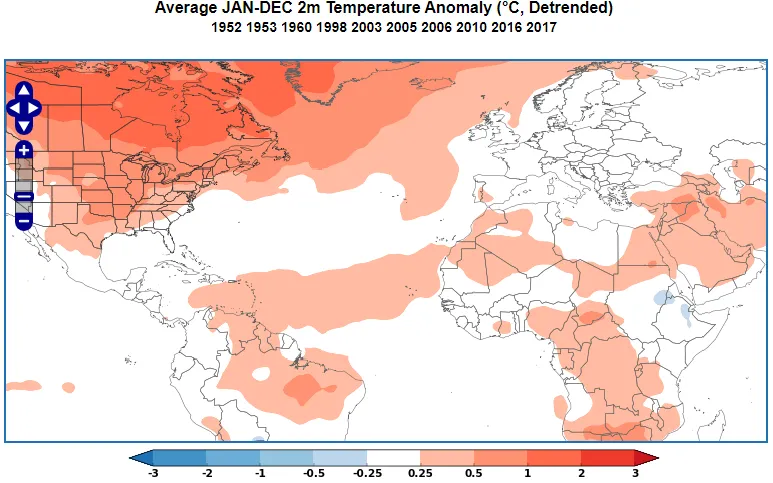
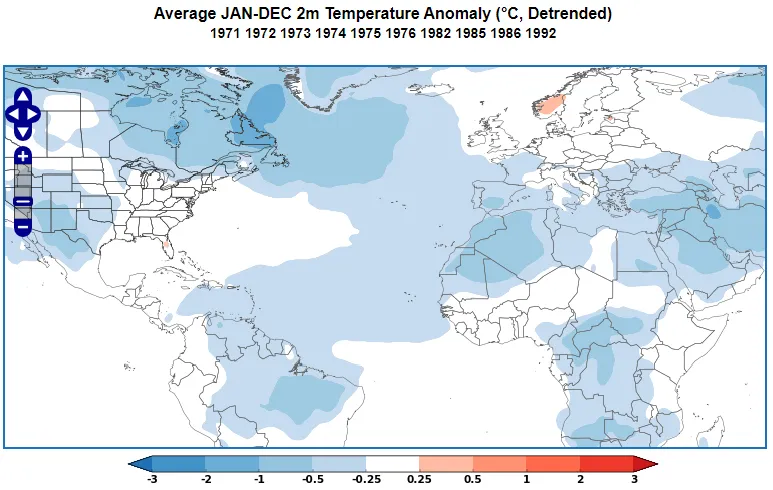

What is the Atlantic Multi-decadal Oscillation: Positive Phase Impacts
The World Climate Service has developed a powerful data mining system that enables users to quickly explore the impact of the Atlantic Multi-decadal Oscillation, and many other indices, by phase for each month of the year, showing impacts on all the major weather variables all around the globe. The maps featured in this article can be produced in just a few clicks of the mouse.
Positive AMO: Europe and Asia in winter
During the strongly positive phase of the AMO in the Northern Hemisphere wintertime, much of Asia (especially Eastern Russia), the Middle East, and parts of Northern Europe are usually warmer than normal. Only the Western Mediterranean is likely to be cooler than normal (Figure 3).
At the same time, much of Asia and Northern Europe are likely to be wetter than normal. Much of Southern Europe, and especially Iberia, are likely to be drier than normal (Figure 4).
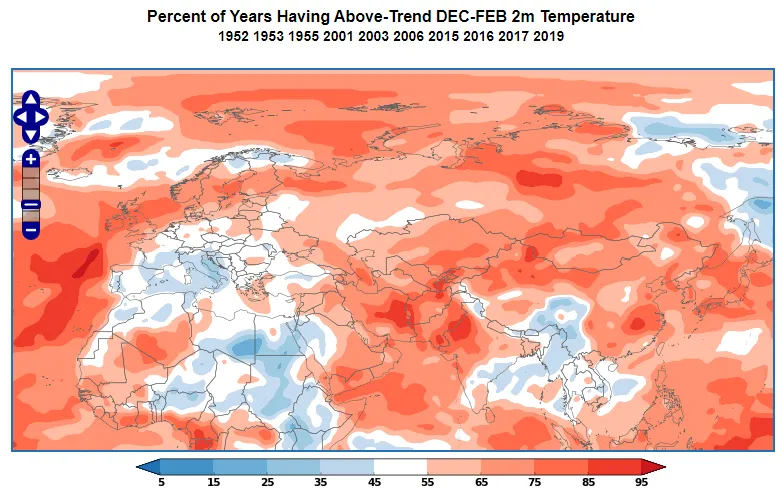
Fig. 3: World Climate Service temperature anomaly probability map for a strongly positive Atlantic Multi-decadal Oscillation in winter
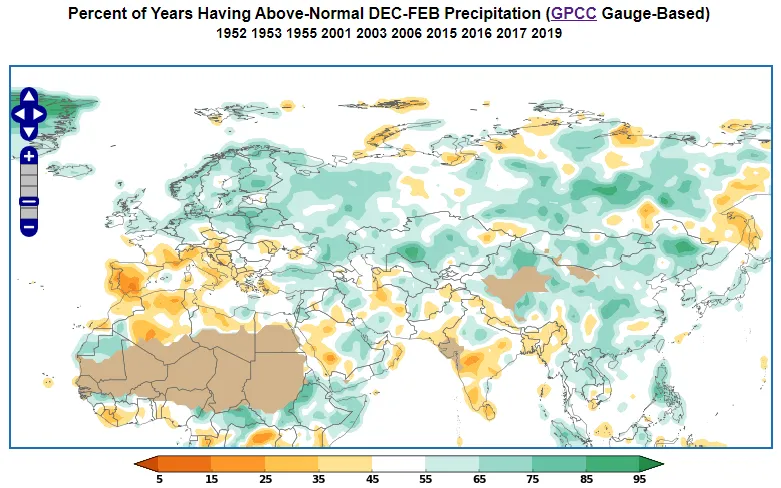
Positive AMO: Europe and Asia in summer
During the strongly positive phase of the AMO in the Northern Hemisphere summer, much of Asia (especially Eastern Russia), the Middle East, and Southern Europe are usually warmer than normal. Only Scandinavia and Siberia are likely to be cooler than normal (Figure 5).
At the same time, much of China, Siberia and Northern Europe are likely to be wetter than normal. Southwestern Europe and the Middle East are likely to be drier than normal (Figure 6).
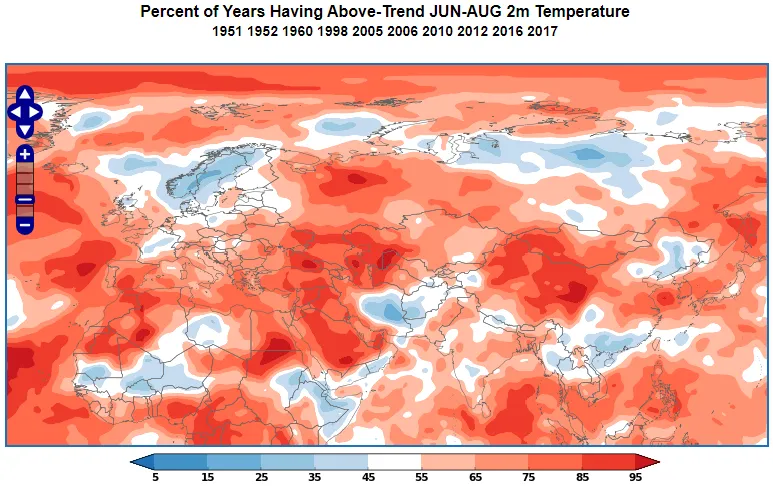
Fig. 5: World Climate Service temperature anomaly probability map for a strongly positive Atlantic Multi-decadal Oscillation in summer
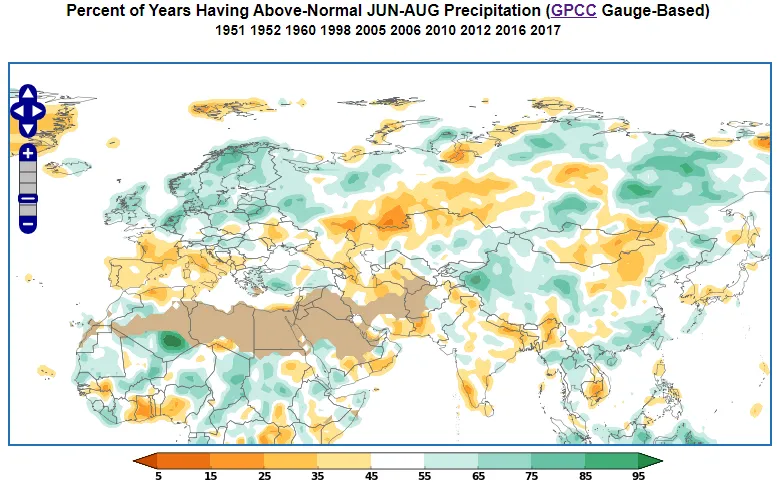
What is the Atlantic Multi-decadal Oscillation: Negative Phase Impacts
Negative AMO: Europe and Asia in winter
During the strongly negative phase of the AMO in the Northern Hemisphere wintertime, much of Asia, the Middle East, and Iberia are usually cooler than normal. Only Central Europe is likely to be warmer than normal (Figure 7). *It should be noted that the AMO has not been strongly negative since 1993. Global warming since 1993 has made a significant contribution to the cool anomalies seen in Figure 7.
At the same time, much of Asia and Eastern Europe are likely to be drier than normal. Parts of Central Europe, Iberia, the Middle East and parts of Eastern China are likely to be drier than normal (Figure 8).
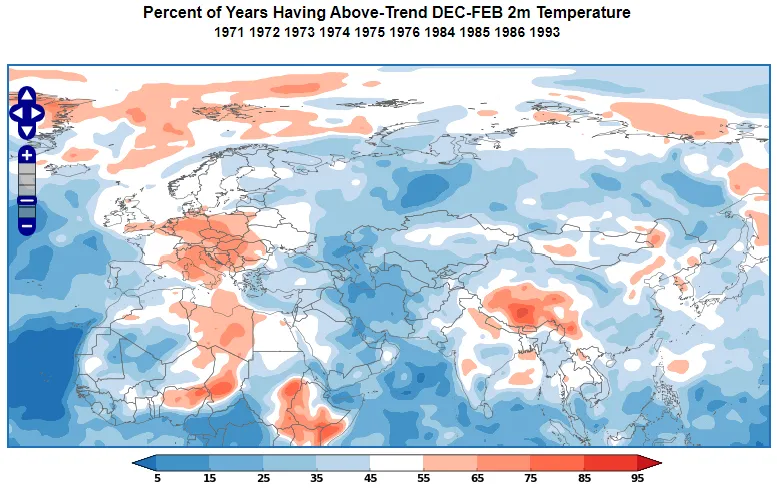
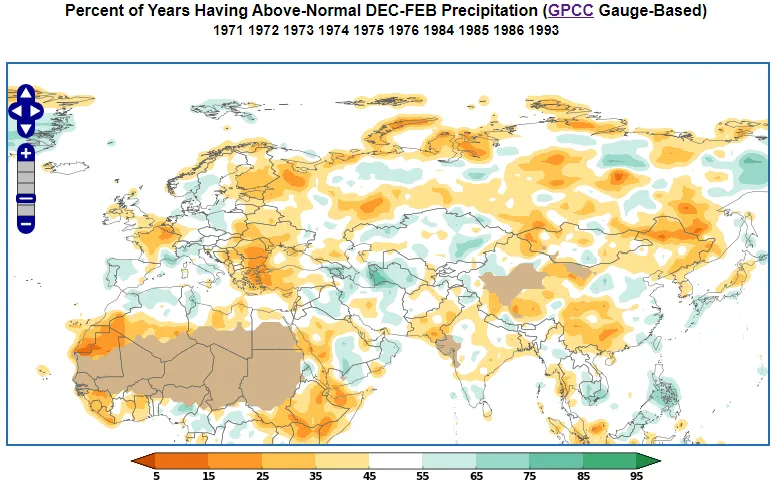
Negative AMO: Europe and Asia in summer
During the strongly negative phase of the AMO in the Northern Hemisphere summer, much of Asia and Europe is likely to be cooler than normal (Figure 9).
At the same time, much of Asia and Central and Northern Europe are likely to be drier than normal. Only Southern Europe and Central Russia are likely to be wetter than normal (Figure 10).
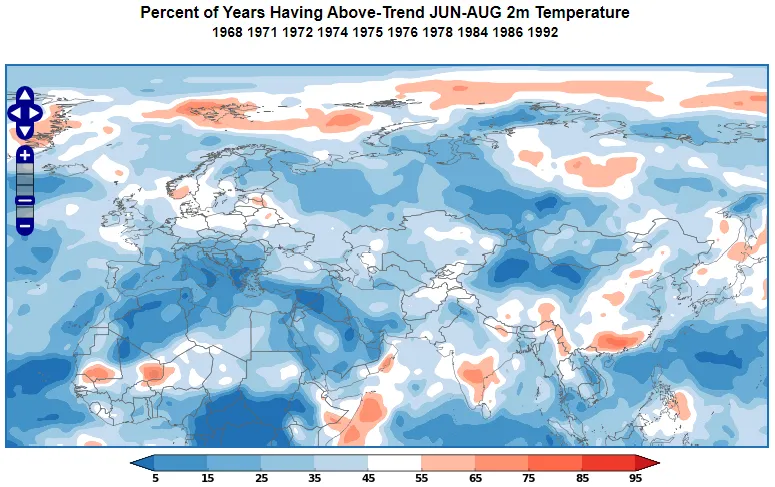
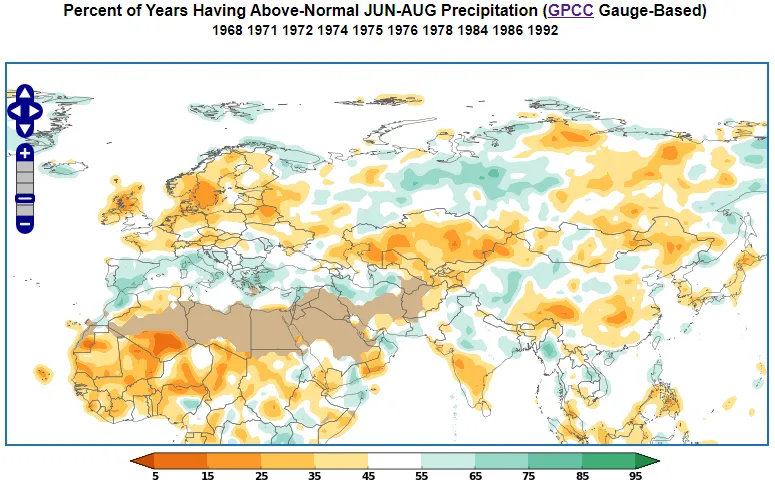
Atlantic Multi-decadal Oscillation and Long Range Forecasting
The Atlantic Multi-decadal Oscillation appears to have a cycle which spans 70 years (Figure 11), but there can be some short-term variation within a given decadal phase.
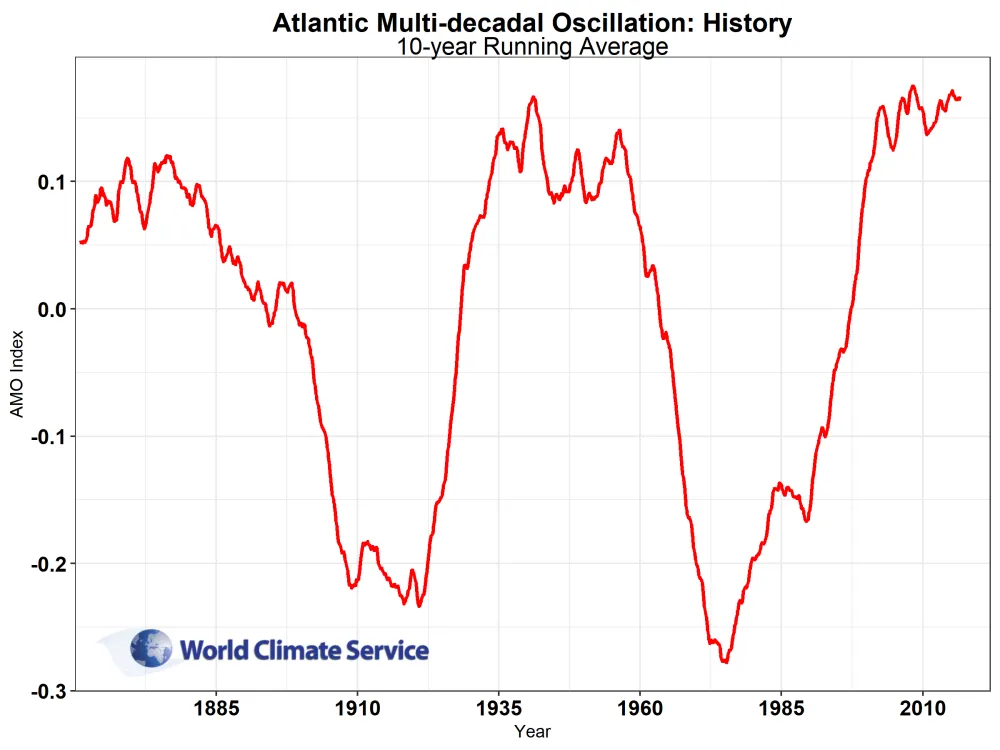
In 1995 the AMO entered a long-term positive phase, which more or less coincided with the Pacific Decadal Oscillation entering a negative phase at the turn of the century. The question of whether the AMO is a result of natural variability or some other effect, such as volcanic activity, remains the subject of scientific research.
The UK Met Office has suggested the AMO is connected to the Thermohaline Circulation but other scientists, such as the team lead by Prof. Michael E. Mann at Penn State University, has linked the AMO to volcanic activity.
Whatever the explanation, the long-lasting phases of the AMO, and their impact on Northern Hemisphere climates, make the AMO a useful climate index for seasonal prediction.

Concluding remarks on the Atlantic Multi-decadal Oscillation
The Atlantic Multi-decadal Oscillation is a cyclical variation of sea surface temperature anomalies over the North Atlantic Ocean that influences weather patterns across large parts of the globe.
The Atlantic Multi-decadal Oscillation phases usually persist for decades which makes the AMO a prime consideration in seasonal forecasting.